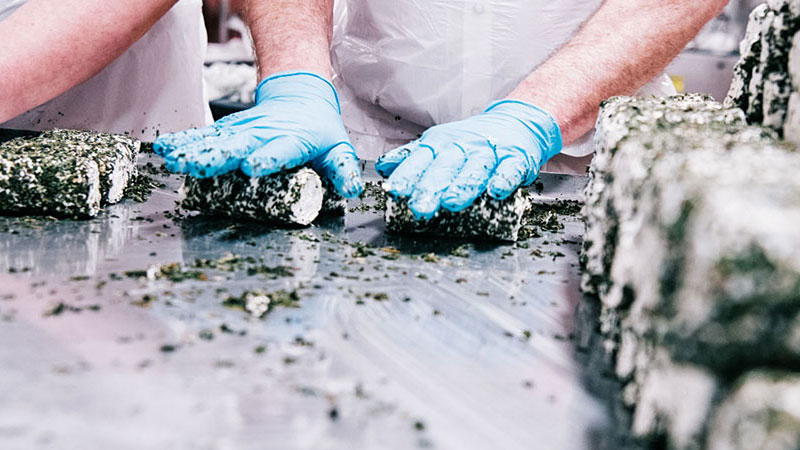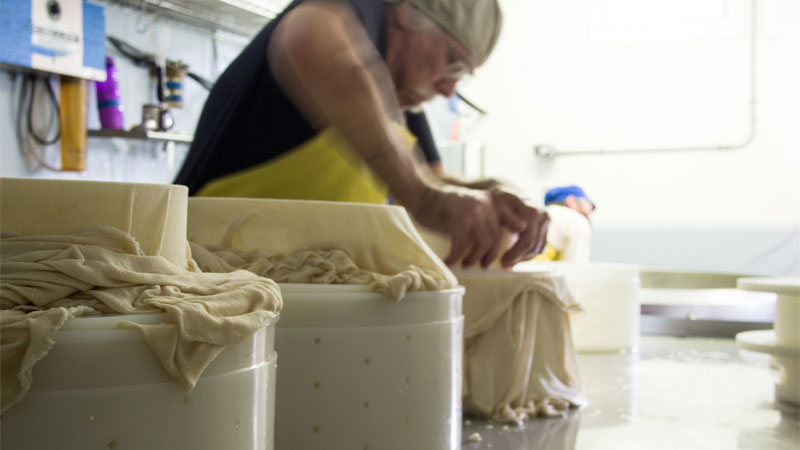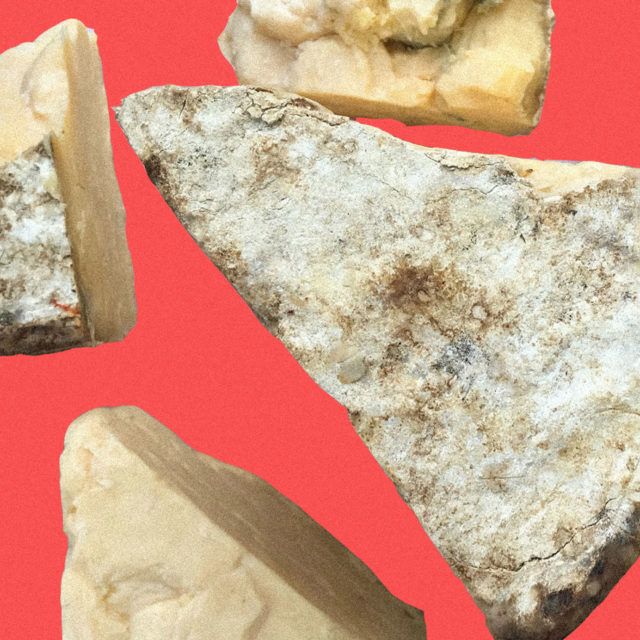“If every dairy farmer closed their farms tomorrow, would the world even know?” Allison Hooper, founder of Vermont Creamery, wonders.
Judith Schad, founder of Indiana’s Capriole Goat Cheese, has similar concerns. “I don’t feel optimistic about farming or dairying generally right now,” she says. “Farmers, particularly dairy farmers, are disappearing.”
Dairy farming has never been easy, but its American pioneers are finding it is getting even harder. In 2016, Georgia’s Manyfold Farm, which made small-batch sheep milk cheese, shuttered the same year it won major cheese awards. Despite the acclaim, The New York Times reported, Manyfold simply wasn’t making enough money to continue production.
“Consumers like to bemoan the decline of the family farm, but the essence is that good food costs more than we’re willing to pay, especially unsubsidized specialty foods, which are expensive to produce and distribute in our economy,” Schad says.
Schad believes Americans spend an extremely low percentage of their income on food. Vocal consumers might sing the praises of non-GMO and grass-fed foodstuffs, but, statistically, the U.S. spends about 6 percent of its income on food, as opposed to 8.7 percent in Switzerland or 9.8 percent in Australia. For some, the choice may be to spend less on food and get a nicer car or take an extra vacation. For the 40 percent of Americans who struggle to pay for food or rent, spending as little as possible is a necessity.
The money that Americans have and don’t have is a complicated issue, not likely to be solved by cheesemakers. But what we do have could arguably be allotted more wisely. Rather than subsidizing small family farms, the U.S. gives billions of dollars of subsidies to already wealthy farmers, usually those who produce corn or soy. In the past 75 years, tax rates on the wealthy have dropped drastically, whereas the tax burden on the average American has stayed about the same, if not worse.
Even as the cheesemaking market becomes more competitive, everyday consumers have little to no context for specialty cheeses. Spending $15 on a bottle of wine seems a reasonable treat, whereas spending $15 on a wedge of cheese seems shocking to those who’ve not yet bought into the idea of food as craft, and a tangible expression of ethics.
“There’s been such a change in how we think about food and the importance of food,” Ruth Reichl, author and former restaurant critic for The New York Times, says. “I think people go into [cheesemaking] now with a real sense of ethics about it and a real mission with what they’re doing. I don’t think people just go, ‘I love this cheese — I’m going to make it.’ I think it’s much more focused.”
Reichl continues, “The bar has [been] raised, and I think it means that the wonderful naïve geniuses who sort of started this business couldn’t do it anymore.”
But, starting a food business that is also meant to change the world can be nigh impossible without the right funding, especially a low-margin business like cheesemaking.

“Private equity is just the worst,” says Hooper, “because they want an immediate return on their investment with very high margins and they want to be able to sell the business in three to five years. It’s hard to build a viable food business in that time, especially one that changes the world in the way we all want to, almost impossible.”
So, where does that leave a young, hopeful cheesemaker?
Perhaps it’s worth taking a look at Parish Hill Creamery of Putney, Vt. Helmed by husband-wife team Peter Dixon and Rachel Fritz Schaal, Parish Hill makes what they deem “natural cheese,” meaning they use raw milk, traditional rennet rather than a lab-grown version, they don’t use commercial starter cultures, and they only use local, hand-harvested salt.
“We focus on the milk and what the milk wants to do, instead of manipulating it and turning it into some idealized notion of cheese,” Schaal explains. This work is what Schaal calls “the culmination of Peter’s 38 years of cheesemaking experience.”
In wine, “natural” is very trendy, almost commonplace now. In cheese, especially in the U.S., there is almost no commercial precedent for it.
“We just got back from Italy,” says Dixon, “and many cheesemakers don’t use commercial starter cultures, they make their own rennet, and they use local salt. In Italy, those people that follow natural methods are the heroes — it’s thought of as the pinnacle of the craft and the best cheese in the country.”
“The people who are touted as the great cheesemakers in this country, in many cases, aren’t doing anything different than what our industrial cheesemaking factories are doing, they’re just smaller,” Dixon says.
“And have better marketing,” Schaal adds.

There are, says Dixon, good examples of more “natural cheesemakers” in the U.S., including Uplands and Meadow Creek, which Schaal calls “infrequent example[s] of companies that have managed to get not huge but get nationwide distribution and still make mostly choices that fall into the natural category.”
“The only thing they’re missing,” says Dixon, is “using commercially made starter cultures. I don’t know about the salt.”
Still-small Parish Hill has been at it for seven years, and, according to Dixon, “we’re just now getting traction.” The brand recently won an international “Slow Cheese” award for their work, only two of seven people in the world to do so.
“I truly believe that the only way that small-scale producers are going to be able to thrive in this more competitive environment is to differentiate themselves,” Schaal says. “I think it is very easy to fall into the trap of going for efficiencies — there are an awful lot of cheesemakers who are essentially making industrial cheese on a small scale — and have the misplaced notion that making those few pennies extra is going to solve the problem of being small and doing things in an expensive and difficult way.”
Schaal argues “that the opposite is true. What they really need to do is eschew those conveniences and those efficiencies and focus on having the highest quality milk, drawing on the native microbes in their environment [to] make something that is truly unique, that could only be made by them, at their place, with that milk. That is what’s going to actually make them different.”
“If you’re just making the same choices as a large-scale company, but with 20 cows, you’re just making really… expensive cheese,” she says. When small-scale cheesemaking is done right, she says, it’s better for the community, the animals, the waterways, and just about everyone else.
“When companies get bigger, they tend to consolidate and get their milk just from one place,” Schaal says. “That doesn’t help the community, it just helps one farmer.” Small-scale cheesemaking, on the other hand, supports a “vibrant agricultural community,” she says.
The market is much more competitive now, but Dixon believes “the cheesemongers and the chefs who buy this cheese need to start acknowledging the difference. They’re going to be paying more for it, but they’re also going to be making heroes out of those cheesemakers that follow the natural methods.”
And those who do have an extra $15 to spend on cheese or wine need to understand both the flavor profile of their potential purchase, but also the agricultural practices and working landscapes they are (and aren’t) supporting.
By farming in a way Schaal calls “future-looking, rather than just pocketbook-looking,” dairy farmers might have a brighter future to look forward to.
“It’s not easy to do so,” Dixon says, but “when you taste [the cheese], the flavor stands alone. It’s so unique, and no one else could capture that flavor.”
